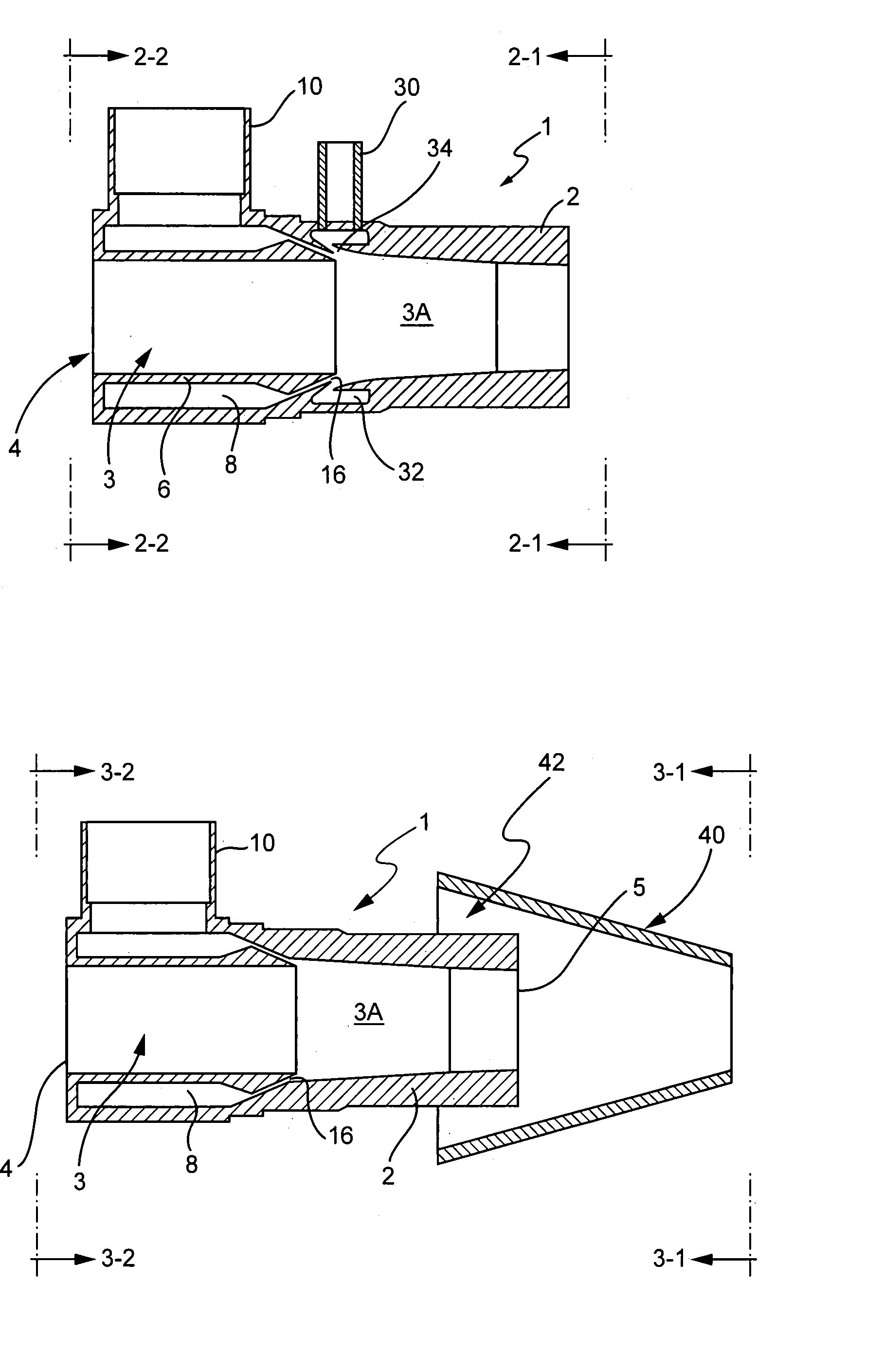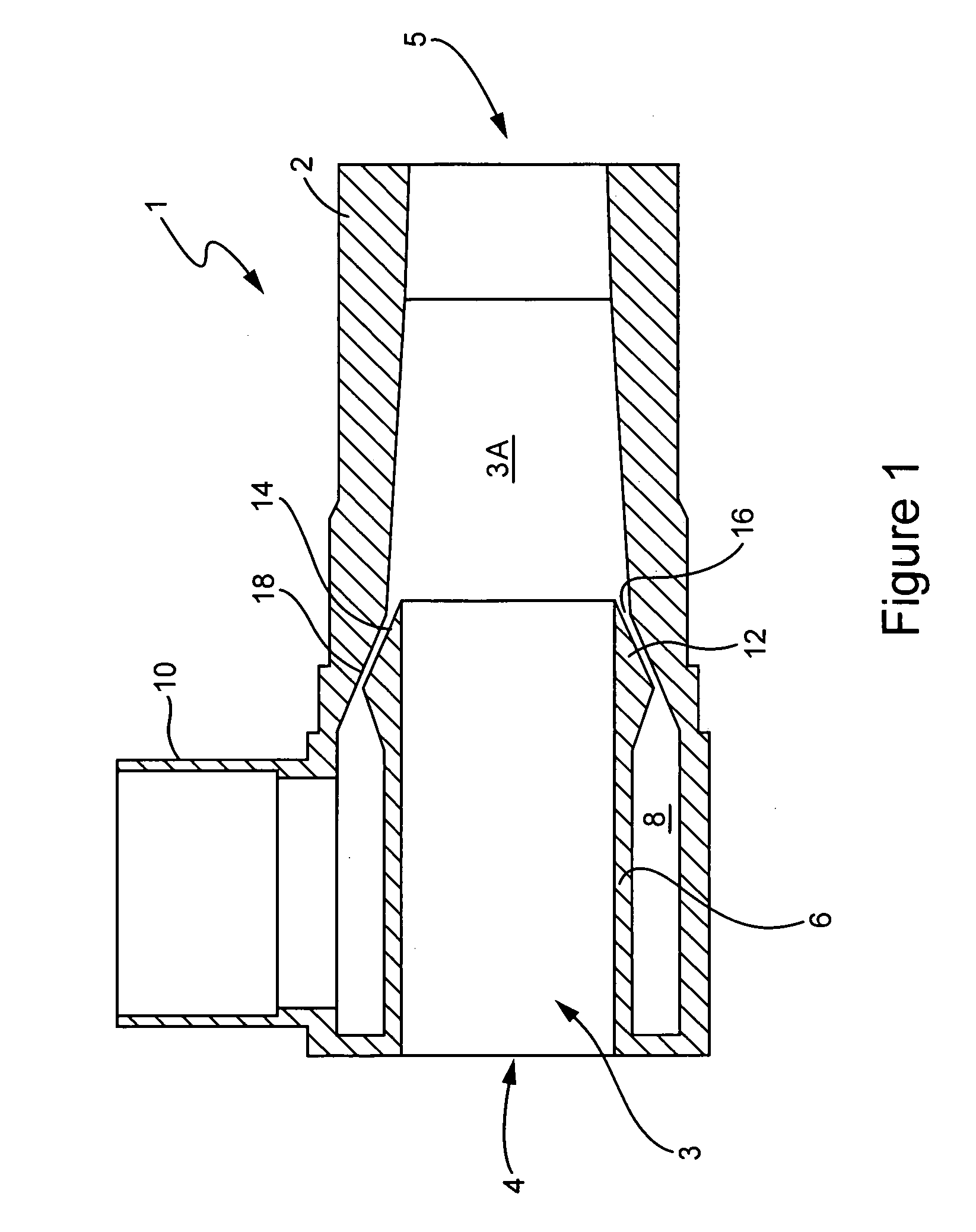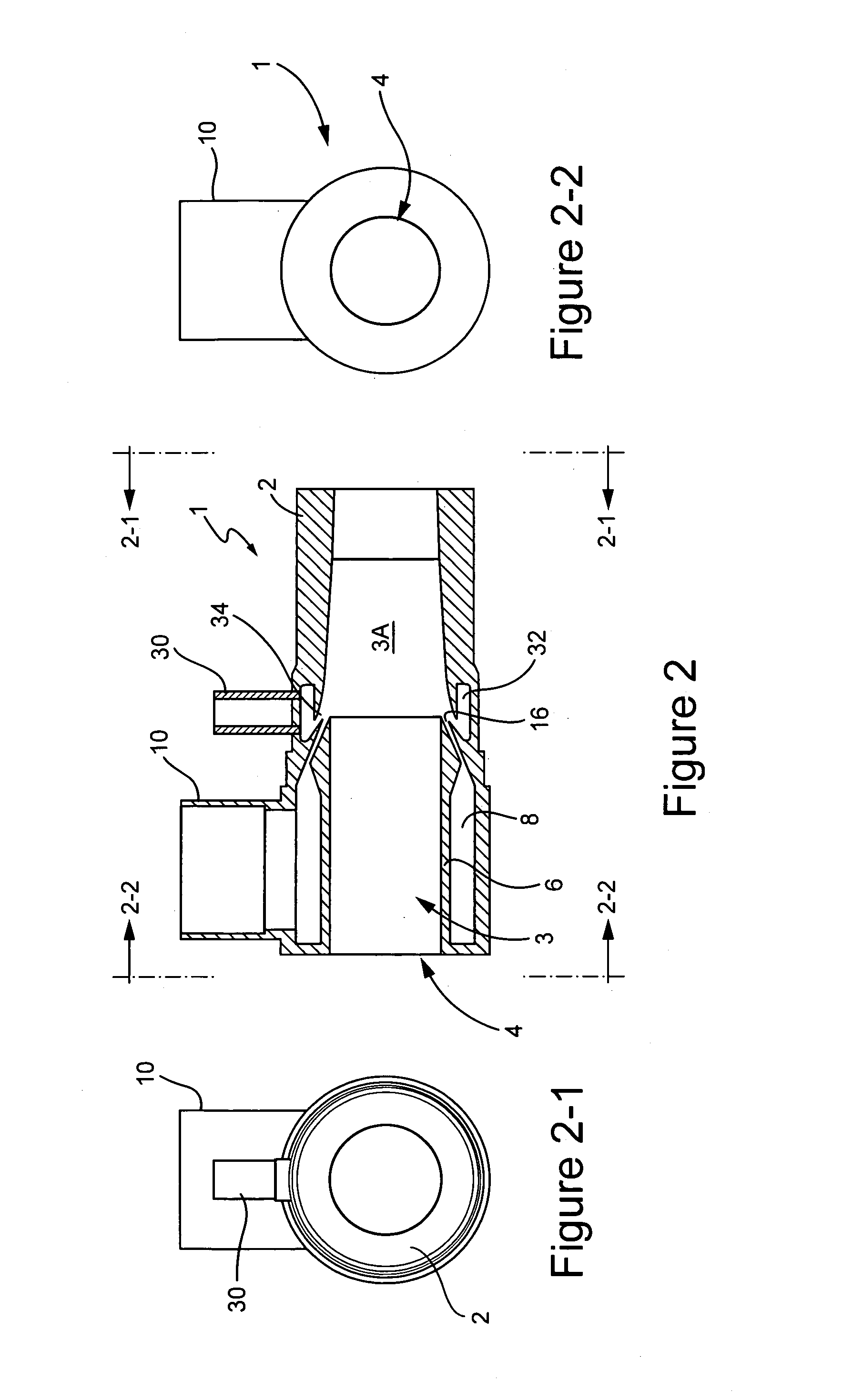Apparatus and methods for moving a working fluid by contact with a transport fluid
a technology of working fluid and moving apparatus, which is applied in the direction of transportation and packaging, machines/engines, instruments, etc., can solve the problems of reducing achieving shock wave across a restricted section, and limiting the size of any particulate throughput, etc., to achieve constant cross section and constant cross section
- Summary
- Abstract
- Description
- Claims
- Application Information
AI Technical Summary
Benefits of technology
Problems solved by technology
Method used
Image
Examples
example
[0077]By way of example only, we have designed a fluid mover (1) having a central passage (3A) bore of 47 mm for use at 5 bar gauge of steam with a dryness of 99%, the annular nozzle having an area ratio of 1.9 with an included angle of 5.7° and a throat gap of 1.34 mm. The angle at which the nozzle is orientated in relation to the axis of the flow passage (3) and that of the mixing chamber (3A) is 24°. The mixing chamber (3A) has a double taper starting at 8° and reducing to 3° included angle at 60% of its length, the length to diameter ratio being 2.13. It has been found that this configuration provides a fluid mover giving greater performance than conventional systems. For example the pumped flow rate of the working fluid is typically 40% to 100% higher than conventional systems, whilst simultaneously performing other functions such as heating, mixing etc.
[0078]The improved performance of the present invention has the additional benefit over conventional systems in requiring less...
PUM
 Login to View More
Login to View More Abstract
Description
Claims
Application Information
 Login to View More
Login to View More - R&D
- Intellectual Property
- Life Sciences
- Materials
- Tech Scout
- Unparalleled Data Quality
- Higher Quality Content
- 60% Fewer Hallucinations
Browse by: Latest US Patents, China's latest patents, Technical Efficacy Thesaurus, Application Domain, Technology Topic, Popular Technical Reports.
© 2025 PatSnap. All rights reserved.Legal|Privacy policy|Modern Slavery Act Transparency Statement|Sitemap|About US| Contact US: help@patsnap.com



